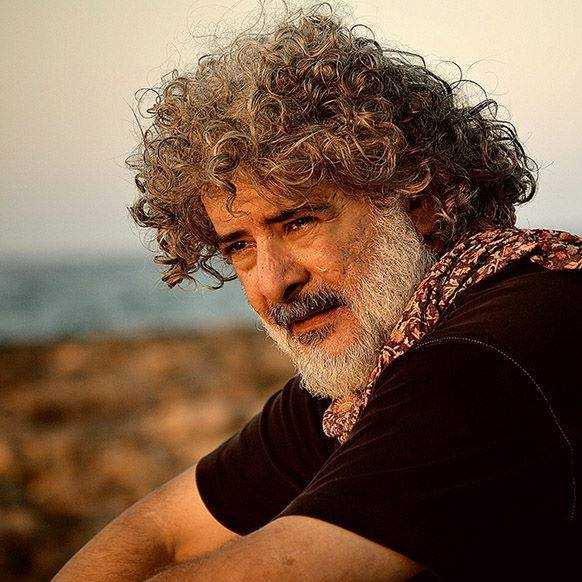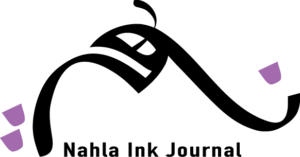For the month of June 2020, Nahla Ink is very happy to share the works of Mohammad Bin Lamin, one of Libya’s most distinguished contemporary artists. Born in 1969 in the city of Misurata, he is totally self-taught as a painter, sculptor, digital artist and photographer, as well as being a fine Arabic poet.
Highly respected in Libya and beyond its borders, Bin Lamin works prolifically and creates from varied and unexpected material, as he adapts to different environments and responds to changing social and political concerns. Influenced by Libya’s history – from the ancient to the modern and most recent – some of his pieces reference as far back as the ancient cave paintings found in the Southern mountains; whilst his colours, shapes and forms draw upon Libya’s landscape, especially the Sahara desert, the Mediterranean Sea and the urban and rural fabrics of towns and cities.
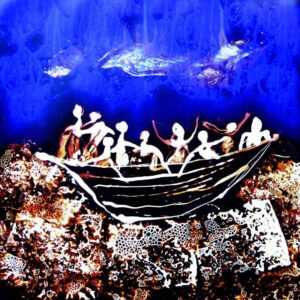
A major experience that impacted on his artistic trajectory was imprisonment at one of Gaddafi’s most notorious prisons in Tripoli during the earlier part of the February 2011 Revolution and enduring a mock execution. In his cell, he began to draw on the walls by using the metal dishes in which food was delivered to him by the wardens.
When Western journalists entered the space after liberation, they were astonished by what he left behind and tracked him down for a news report. After he had left the prison, Bin Lamin started on another project. He began to pick up and collect items left by the front lines of the anti-Gaddafi insurgency – shells, grenades, the AK-47s and other war debris – and turning them into incredible new sculptures.
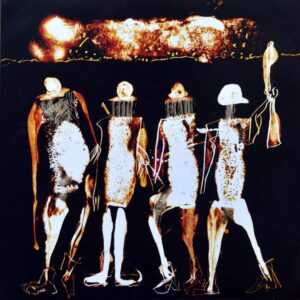
About this period, Bin Lamin has said: “When I was imprisoned in the resort of death, the Abu Salim prison, I used art to expand the narrowness of the room; that vile, narrow, menial and suffocating cell. Due to the absence of drawing tools, I used the aluminium foil that was given to us with our food as foil sheets and plates. I discovered that the foil gives the same lines as charcoal and pencil, especially if you trace it on the wall. So resorting to drawing on the wall was a haven, a refuge, an escape, even in those times when we were moved from one cell to another.
“My goal was to expand the narrow walls and stop staring at the terrifying iron door. Through my scribbling and drawing on the walls I was opening a door for contemplation, for space, for the horizon; and, at the same time, it was an expression of what was happening during those hard days. Creativity in capture is a meeting point between prison and the revelation of the soul.”
Offering further insight into his sculptural work, he has also stated: “My art reflects on the pain, the revolution, the dictatorship, the story of Libya, the so-called Arab Spring, the bad conditions that we all went through for decades; as well as the broken collective memory of being bound and ruled by force.
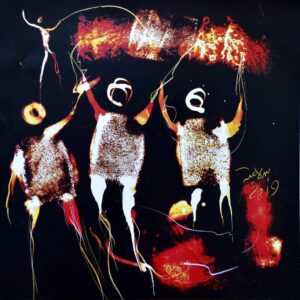
“As an artist and former political prisoner, I find myself propelled with all my obsessions and emotions and with more strength to insist on uncovering the image of the tortured being on its land; and, to search for the mature artistic expression of the shape of the ghoul (monster) that transfigured people on to its image and raped beauty. Thus I have tried to render the materials of killing – like rockets and the bullets – in the shape of the dancing lovers and to bestow on their gathering some of the jubilation and vigour for love and life, to propagate a message that we are ugliness if we choose and we are also the beauty.”
As I have followed Bin Lamin’s work for a number of years, it was difficult to decide which pieces to feature on Nahla Ink, due to the large volume of paintings, sketches and sculpture. In the end, I chose these images that spoke to me. Belonging to a series completed circa 2018-2019, Bin Lamin has written corresponding Arabic poetry. For example, the work below – titled ‘Urinating on the Corpse’- came with a poem that has been translated into English by the Libyan writer Ghazi Gheblawi.
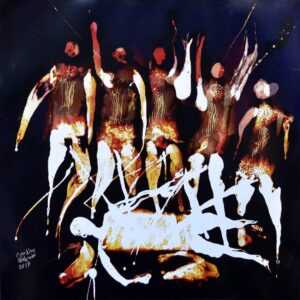
Urinating on the Corpse – Dec 2019
The age of death hasn’t reached an hour old
The boy hugs his land and spreads his hands
They call him in the language of time: departed
And I call him arriving every day.
People are made of what they missed
Even their sadness is typical
They cry in groups and laugh in groups..
The boy had a photograph in his pocket
He was carrying it in the trouser’s pocket
I think it is the picture of his mother or lover or someone else..
The wretched went to war with friends It seemed like going on a nice excursion
A picnic nearby But it was totally something else
The boy was caught
His hostile fellow countrymen are around him now..
Urinating on the corpse!
Bin Lamin’s work has been exhibited in Libya, Egypt, United Kingdom, USA, China, United Arab Emirates, Lebanon, Italy, Netherlands, Denmark, India, Turkey and Malta.
To learn more about Mohammad Bin Lamin:
Short video by Al Jazeera English circa July 2012: https://www.youtube.com/watch?v=4xa6p8e-dZA
If you wish to follow him, he has a public page on Facebook: https://www.facebook.com/ARTBINLAMIN/
And on Instagram: https://www.instagram.com/m.binlamin/
